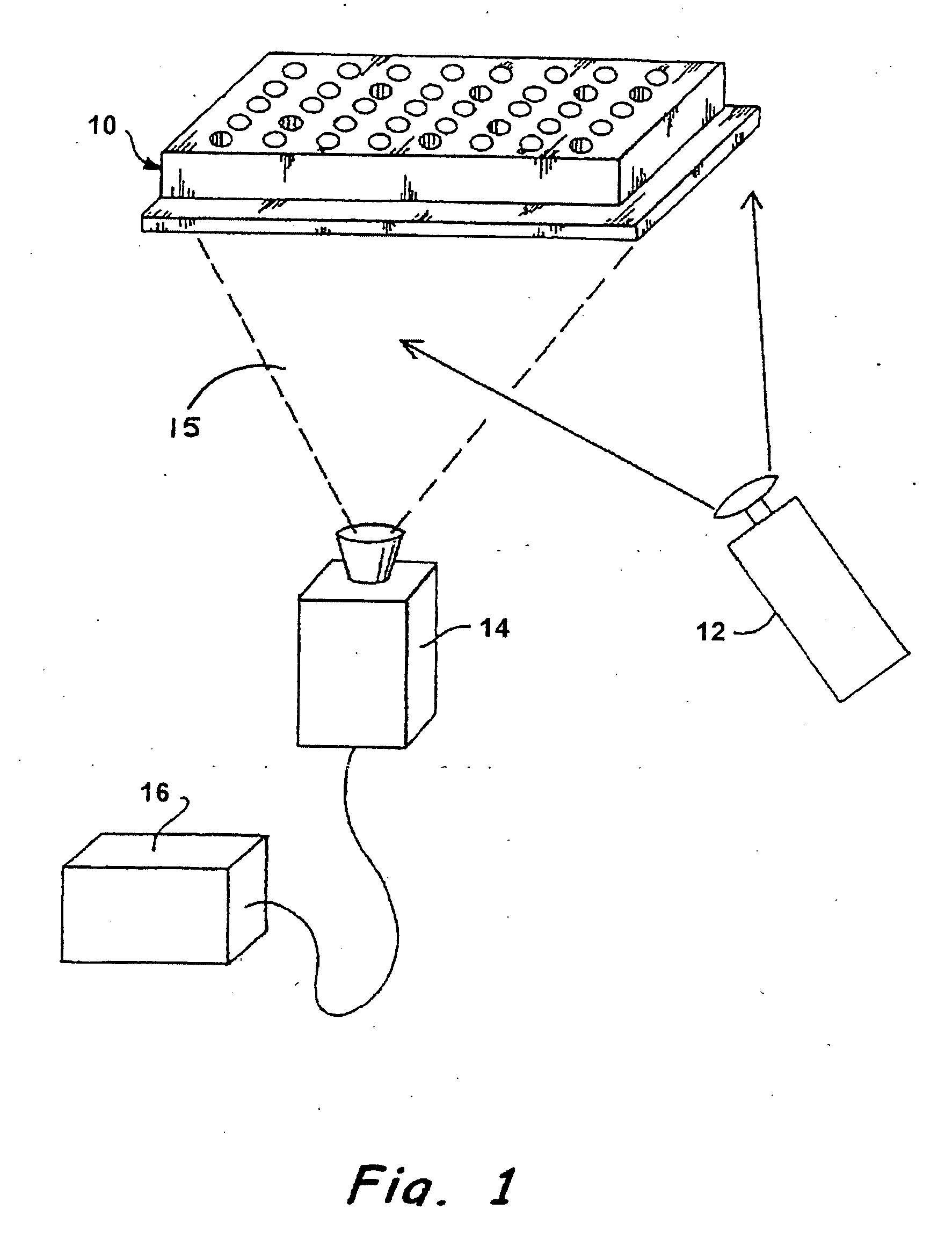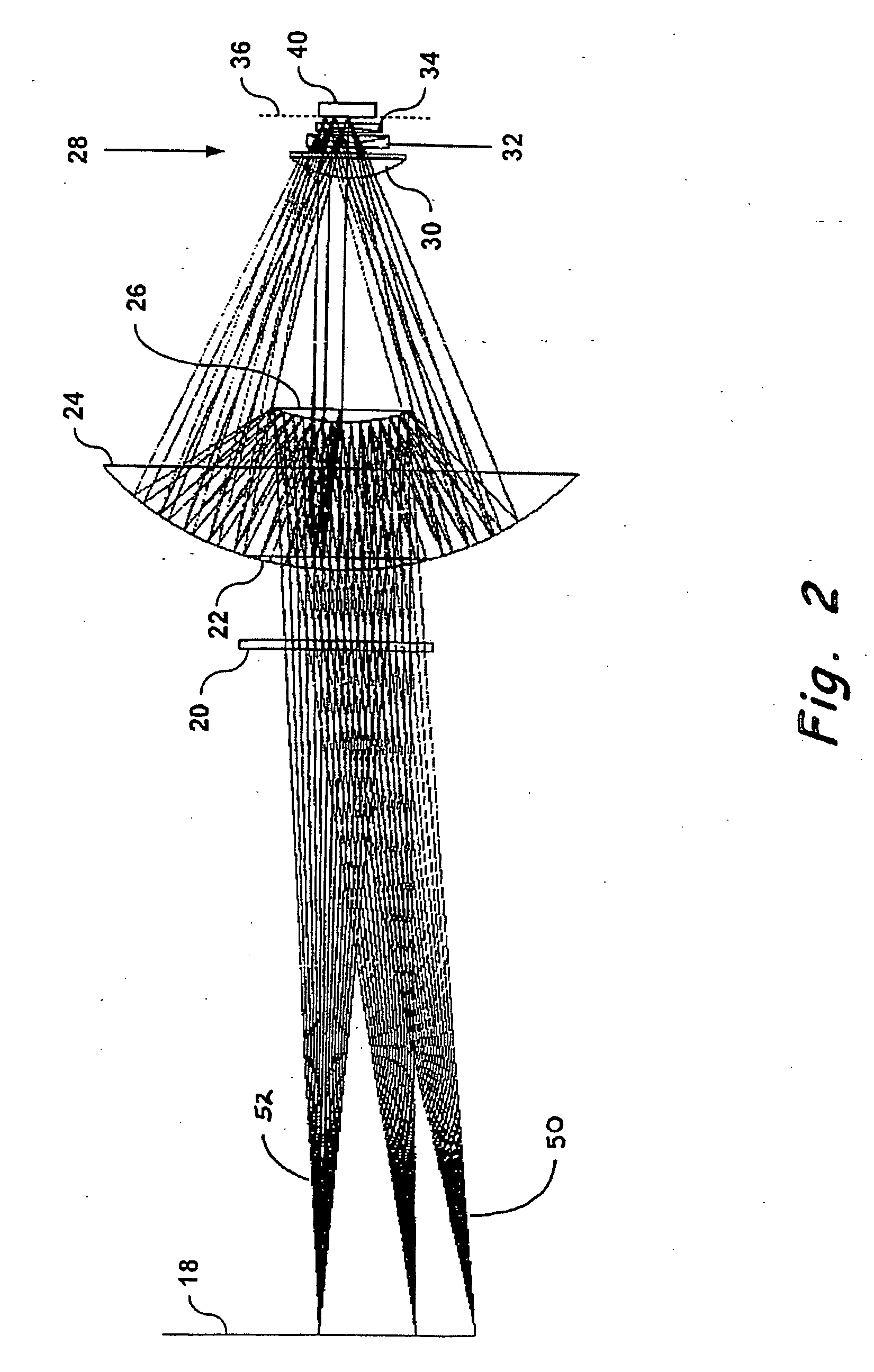Reflective optic system for imaging microplate readers
a microplate reader and reflector technology, applied in the field of fluorescence and luminescence analytical techniques, can solve the problem of reducing the overall assay throughpu
- Summary
- Abstract
- Description
- Claims
- Application Information
AI Technical Summary
Problems solved by technology
Method used
Image
Examples
Embodiment Construction
[0015] Typically, optics to image multi-well plates include very large refractive systems, with many lens elements. Plates having up to 1,536 wells, however, present a problem for conventional optics because each well is necessarily smaller than wells of a 384 well plate used in conventional systems, and accordingly samples in the wells produce less total light. In addition, higher optical resolution is required, and must be available over a relatively wide field. A wide field of View is desirable for high throughput, as it permits a 1,536 well plate to be imaged simultaneously with high efficiency.
[0016] Illuminating multi-well plates with lasers can enable simultaneous imaging due to the intensity of lasers. Laser illumination, however, can be troublesome because the high-powered lasers used may require three-phase electrical power and their own water-cooling systems. Further, laser illumination is not color versatile--that is, it lacks the ability to excite samples at a wide vari...
PUM
 Login to View More
Login to View More Abstract
Description
Claims
Application Information
 Login to View More
Login to View More - R&D
- Intellectual Property
- Life Sciences
- Materials
- Tech Scout
- Unparalleled Data Quality
- Higher Quality Content
- 60% Fewer Hallucinations
Browse by: Latest US Patents, China's latest patents, Technical Efficacy Thesaurus, Application Domain, Technology Topic, Popular Technical Reports.
© 2025 PatSnap. All rights reserved.Legal|Privacy policy|Modern Slavery Act Transparency Statement|Sitemap|About US| Contact US: help@patsnap.com



